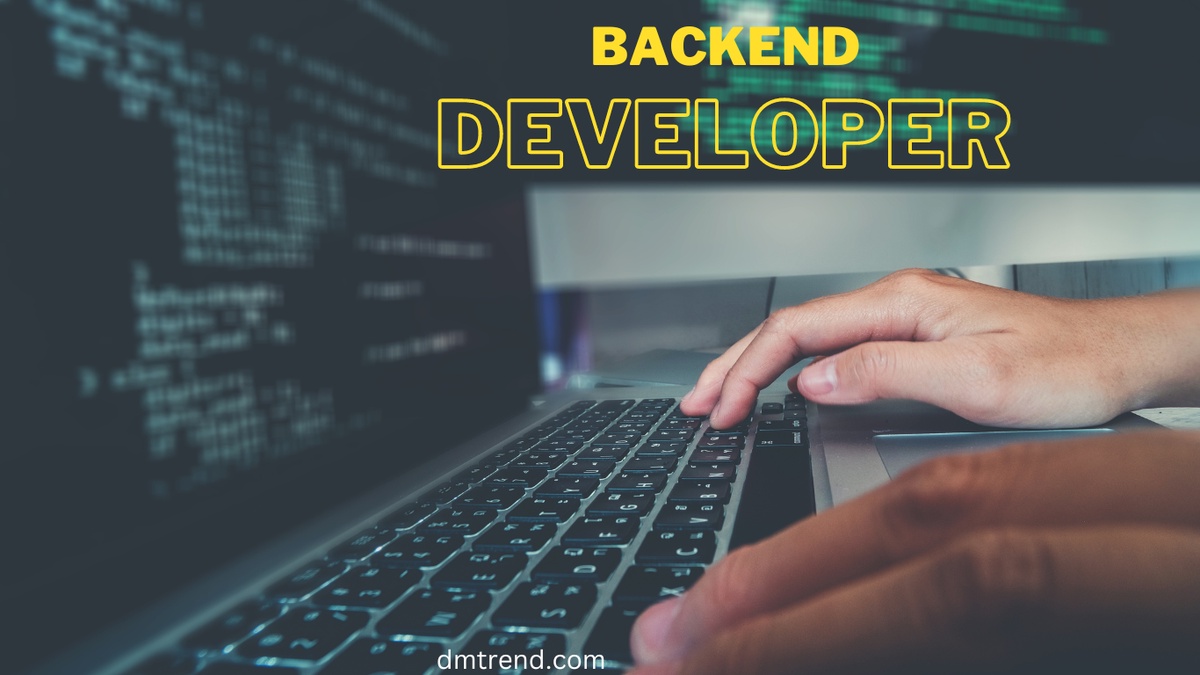In the realm of software development, the role of a back-end developer stands as a cornerstone in creating robust and functional applications. With lines of code powering the unseen mechanisms, these developers are the architects of the digital world, ensuring that everything runs seamlessly behind the scenes. In this article, we'll delve into the intricacies of being a back-end developer, from their responsibilities and skills to their significance in the tech industry.
Pioneers of the Digital Landscape
Understanding the Back-End Developer
Defining the Back-End
The back end of a software application refers to the server-side operations that users don't directly interact with. It encompasses databases, servers, APIs, and other components that work behind the scenes to ensure the application's functionality.
The Developer's Role
A back-end developer is responsible for translating the visual and functional elements of a website or application into code that runs smoothly on the server. They work hand-in-hand with front-end developers to ensure a seamless user experience.
Key Responsibilities of a Back-End Developer
Data Management and Storage
Back-end developers design and maintain databases, allowing for efficient data storage, retrieval, and manipulation.
Server Management and Configuration
They manage the server, ensuring that it's properly set up to handle requests, manage traffic, and maintain overall performance.
Security Implementation
Back-end developers implement security measures such as encryption and authentication to protect sensitive user data.
API Integration
They integrate various APIs (Application Programming Interfaces) to facilitate communication between different software components.
Essential Skills and Proficiency
Programming Languages Mastery
Back-end developers are proficient in languages such as Java, Python, Ruby, or PHP, using them to build the logical framework of applications.
Database Management
A solid understanding of database management systems (DBMS) is crucial for efficiently organizing and retrieving data.
Version Control Systems
They use version control tools like Git to track changes, collaborate with other developers, and manage codebase versions.
Problem-Solving Aptitude
Back-end developers possess strong analytical skills to troubleshoot issues and devise effective solutions.
Frameworks and Technologies
Exploring Backend Frameworks
Developers often utilize frameworks like Node.js, Django, or Ruby on Rails to expedite development and streamline common tasks.
Databases and Their Types
Understanding databases, including SQL and NoSQL variants, helps developers choose the most suitable option for different projects.
RESTful and GraphQL APIs
Back-end developers work with APIs to enable smooth communication between various software components and systems.
Collaboration with Front-End Developers
Seamless Integration
Cooperation between back-end and front-end developers ensures that the user interface and server-side operations align seamlessly.
Communication and Cooperation
Effective communication between developers of different domains is essential for a cohesive and functional end product.
The Significance of Back-End Development
User Experience and Functionality
A well-structured back end is pivotal in delivering a seamless user experience, allowing the front end to shine.
Performance Optimization
Back-end developer optimize applications for speed and efficiency, ensuring swift responses to user interactions.
Challenges and Problem Solving
Debugging Complex Issues
Identifying and resolving intricate bugs and glitches requires a systematic approach to maintain application stability.
Scalability Challenges
Developers must design systems that can handle increased traffic and data without sacrificing performance.
The Evolution of Back-End Development
From Monoliths to Microservices
Back-end architecture has evolved from monolithic structures to microservices, enabling easier scalability and maintenance.
Cloud Computing's Impact
Cloud platforms have revolutionized back-end development, offering scalable and cost-effective solutions.
Educational Paths and Resources
Computer Science Degrees
Many back-end developers hold computer science degrees, providing them with a strong foundation in programming and software engineering.
Online Learning Platforms
Online courses and tutorials offer accessible avenues for aspiring developers to learn back-end skills.
Career Opportunities and Growth
Demand in the Job Market
The demand for skilled back-end developers continues to rise as businesses embrace digital transformation.
Continuous Learning
Staying updated with the latest technologies and trends is crucial for maintaining relevance and career growth.
Future Trends in Back-End Development
Serverless Architecture
Serverless computing is gaining traction, allowing developers to focus more on code and less on infrastructure.
AI Integration
Artificial intelligence and machine learning are being integrated into back-end systems for enhanced functionality.
Balancing Creativity and Technicality
Crafting Innovative Solutions
Back-end developers creatively solve complex problems to deliver innovative and effective solutions.
Technical Constraints
While fostering creativity, developers must also work within the technical boundaries of the project.
Maintaining Security and Data Privacy
Cybersecurity Measures
Ensuring robust security measures is imperative to protect user data and maintain trust.
Compliance Standards
Developers must adhere to data protection regulations and industry-specific compliance standards.
Coding for Efficiency and Sustainability
Writing Clean and Efficient Code
Back-end developers prioritize code quality to enhance performance, readability, and maintainability.
Sustainable Development Practices
Efforts towards sustainable coding contribute to long-lasting and eco-friendly applications.
Conclusion
In the ever-evolving landscape of technology, back-end developer remain the unsung heroes, working diligently to ensure the functionality, security, and performance of applications. Their mastery of programming languages, databases, and frameworks shapes the digital world we interact with daily.
FAQs
What is the main role of a back-end developer?
Back-end developers manage server-side operations, databases, security, and APIs to ensure the proper functioning of applications.
What programming languages do back-end developers use?
Back-end developers use languages like Java, Python, Ruby, and PHP to build the logic behind applications.
How do back-end and front-end developers collaborate?
Back-end and front-end developers collaborate to align user interfaces with server-side operations, ensuring a seamless user experience.
Why is security crucial for back-end development?
Security is essential to protect user data and prevent unauthorized access to sensitive information.
What is the future of back-end development?
The future holds trends like serverless architecture and AI integration, shaping more efficient and intelligent applications.


No comments yet